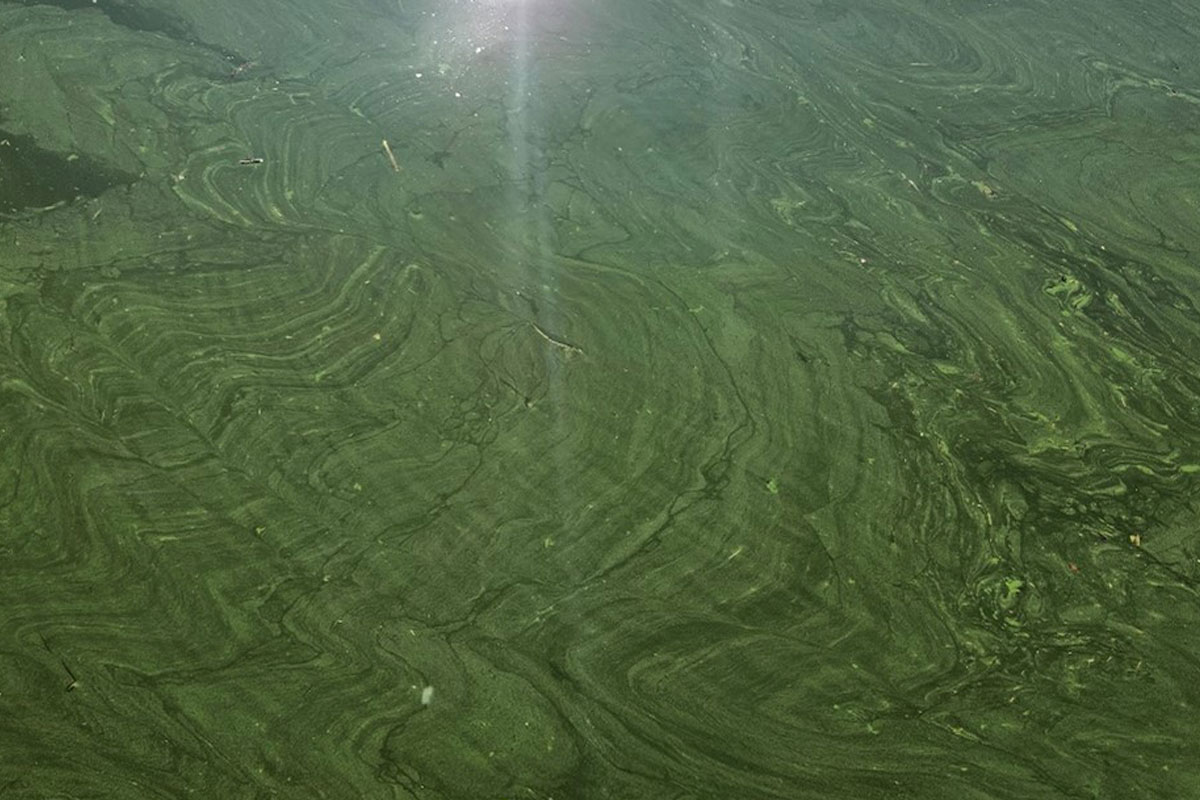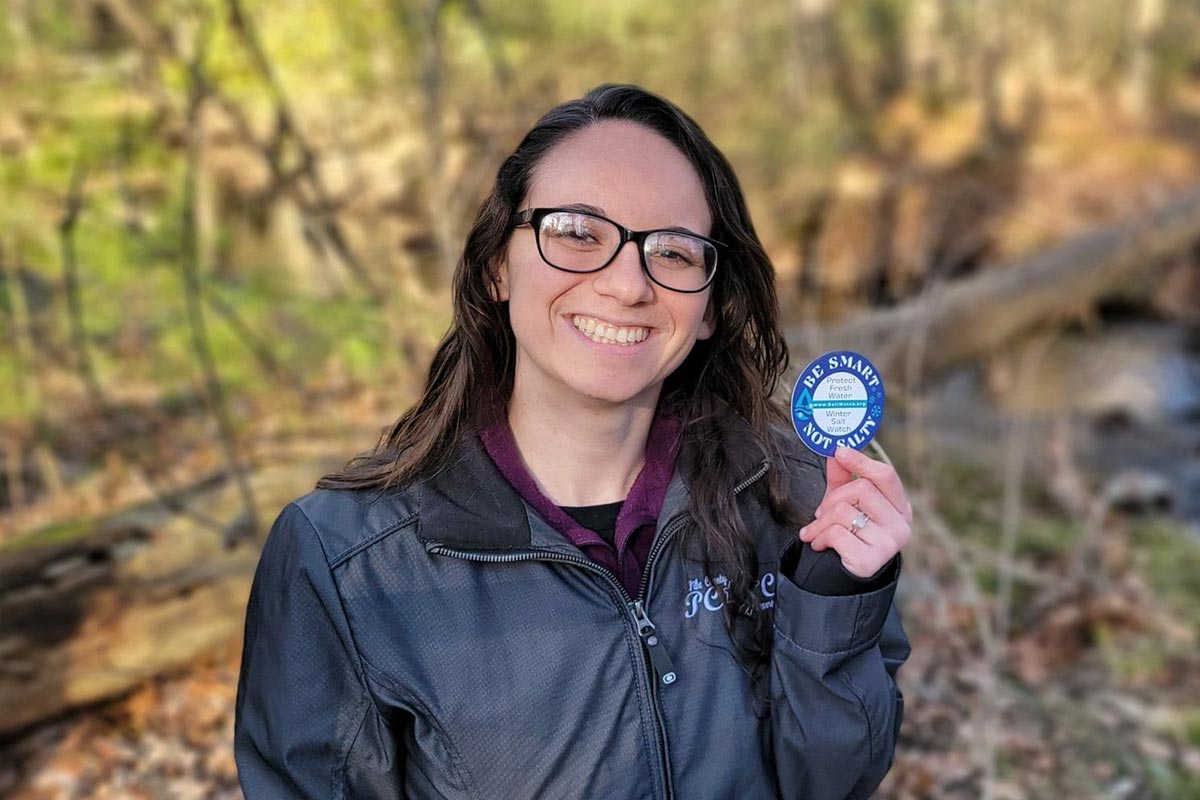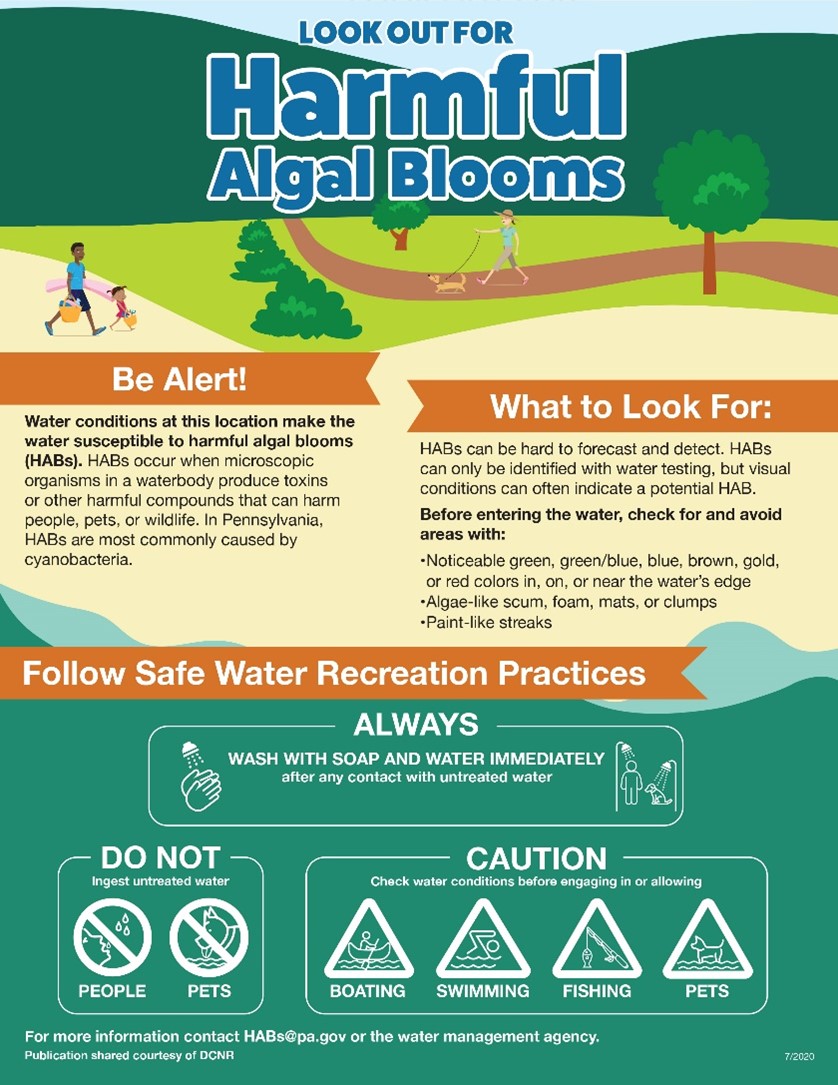News

Harmful Algal Blooms: What Are They and What Can We Do?

By: Rachael Marques, PCCD Watershed Specialist
Algae are a natural and important part of aquatic ecosystems. Like plants, algae have the ability to photosynthesize and produce oxygen in their aquatic environments where it is normally very limited. Algal blooms occur when these different species of algae begin to grow seemingly out of control, causing disruption to the ecosystem and usually changing the appearance of the water. Sometimes, these blooms release toxins harmful to humans and animals, creating a Harmful Algal Bloom (HAB).
Harmful Algal Blooms are currently being heavily researched by the scientific community as they become increasingly common. There are some factors of these blooms that are still unknown, such as why the algae produce the toxins. However, it is certain that conditions such as warmer waters and excess nutrients (like phosphorus and nitrogen) are playing a role in these blooms. Phosphorus and nitrogen occur naturally in aquatic environments and normally limit the amount of plant/algal growth possible in an ecosystem. However, when extra nutrients get into the water due to human activities, overgrowth becomes problematic.
What can we, as residents of the area, do to help? The best thing homeowners and communities can do is implement practices to help prevent excess nutrients from entering our waterways. If you have a septic system, make sure that it is well-maintained and functions properly. Have a company come out and inspect your septic system, especially if it is older and may not have been inspected in a while. Also, be sure to have your septic system pumped when needed. In general, this is every 3 years, depending on the usage and size of the household. If your septic system is not functioning properly, nutrients can leech into groundwater and end up in our waterbodies such as lakes and streams. If you use lawn fertilizer, it is important to only use the amount needed since excess nutrients may not be absorbed by your lawn and can be picked up by runoff in rain events. Since they are more tolerant of the soil conditions in our area, the use of native plants for landscaping can also help curb the need for fertilizers overall.
If you live in a community or have a large property, consider looking at how stormwater flows through your area. When stormwater becomes runoff, it can pick up excess nutrients and sediment and transport them into our waterways. Proper stormwater management can help prevent this. This can include practices such as rain gardens and the use of plant buffers if you have property that is waterfront. These practices can help slow and filter stormwater runoff before it gets to your local waterway. 
It is important to note that not all algal blooms produce toxins, and it is not possible to identify if a bloom is harmful by its appearance. If you suspect a harmful algal bloom is present in your local waterbody, it is important to get the water tested, if possible, for the presence of cyanobacteria (most commonly associated with HABs) and the toxins associated with them. The Environmental Protection Agency (EPA) has a list of labs that perform the analysis: Laboratories that Analyze for Cyanobacteria and Cyanotoxins | US EPA. Here in the Poconos, there is also an organization called the Pocono Lakes Ecological Observation Network (PLEON) that works with many lake associations in the area on lake water quality and management programs. If water quality testing is not accessible to you, be sure to look out for any posted advisories. Signs may look something like the image to the right. It is important to note that not all lakes are tested for HABs. The best way to protect yourself, family, and pets for certain is to stay out of the water if you suspect a bloom. As the Center for Disease Control (CDC) says: “When in doubt, keep out!”.
Even though some algae can be harmful, algae are still an integral part of our natural aquatic ecosystems. Seeing some algae in waterbodies can be normal and can signify a healthy environment. There are also many plants that look like algae on the surface of some ponds and lakes. The best thing to do is get the water tested and ideally to have a water quality monitoring program where the quality of your local waterbody is observed on a regular basis.
For additional information, visit this page on HABs from the Pennsylvania Department of Environmental Protection. If you suspect there is a HAB in your local waterway, e-mail the Pennsylvania HABs Task Force at HABs@pa.gov and/or report it to your local community manager.
Resources:
https://www.noaa.gov/what-is-harmful-algal-bloom
https://www.cdc.gov/harmful-algal-blooms/about/how-to-recognize-a-harmful-algal-bloom.html
